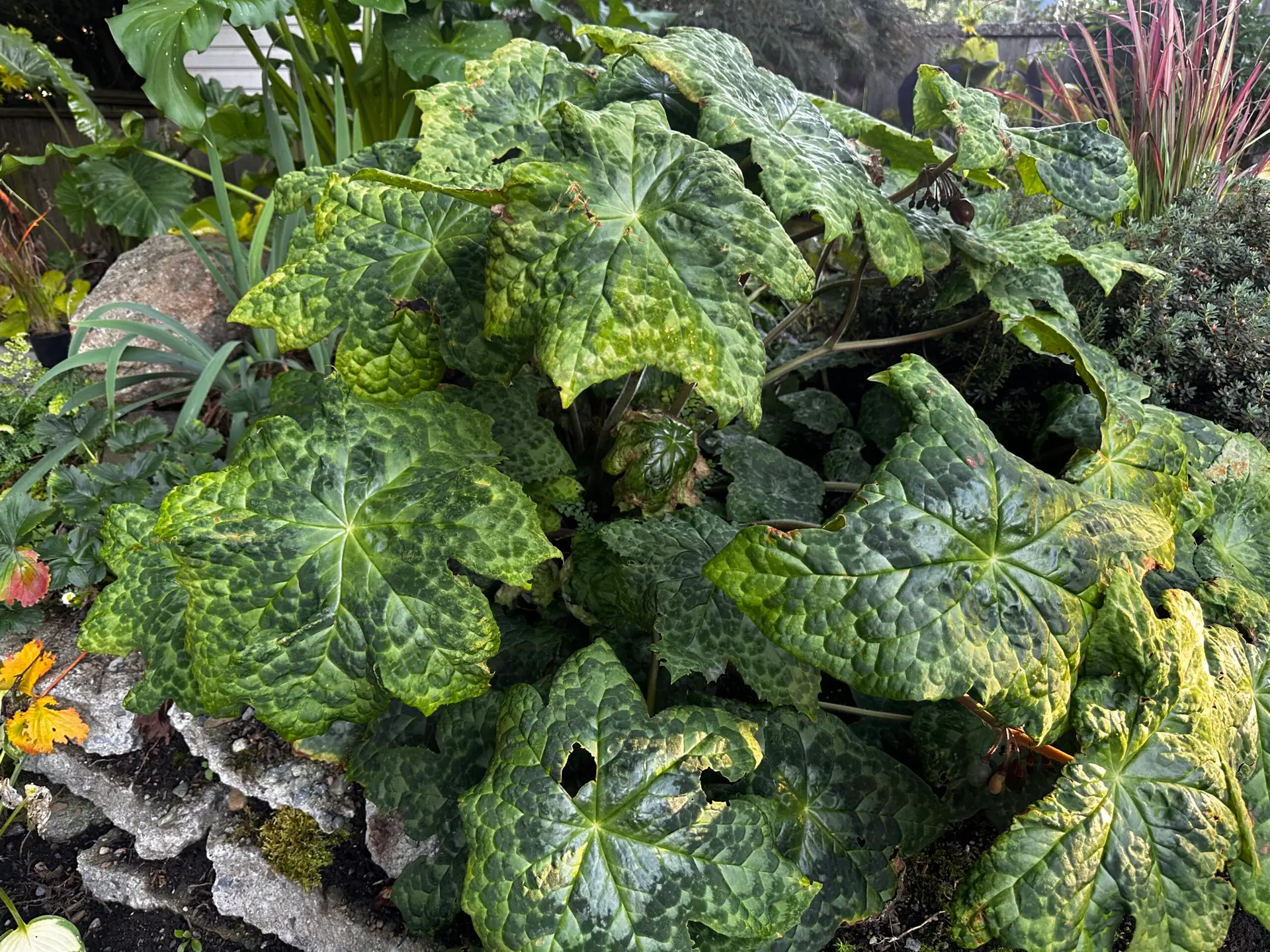
Asian Mayapple
Back to Plant Library Podophyllum cv. ‘Kaleidoscope’ Description Large, umbrella-like leaves unfurl in spring with marbled patterns of green, bronze,
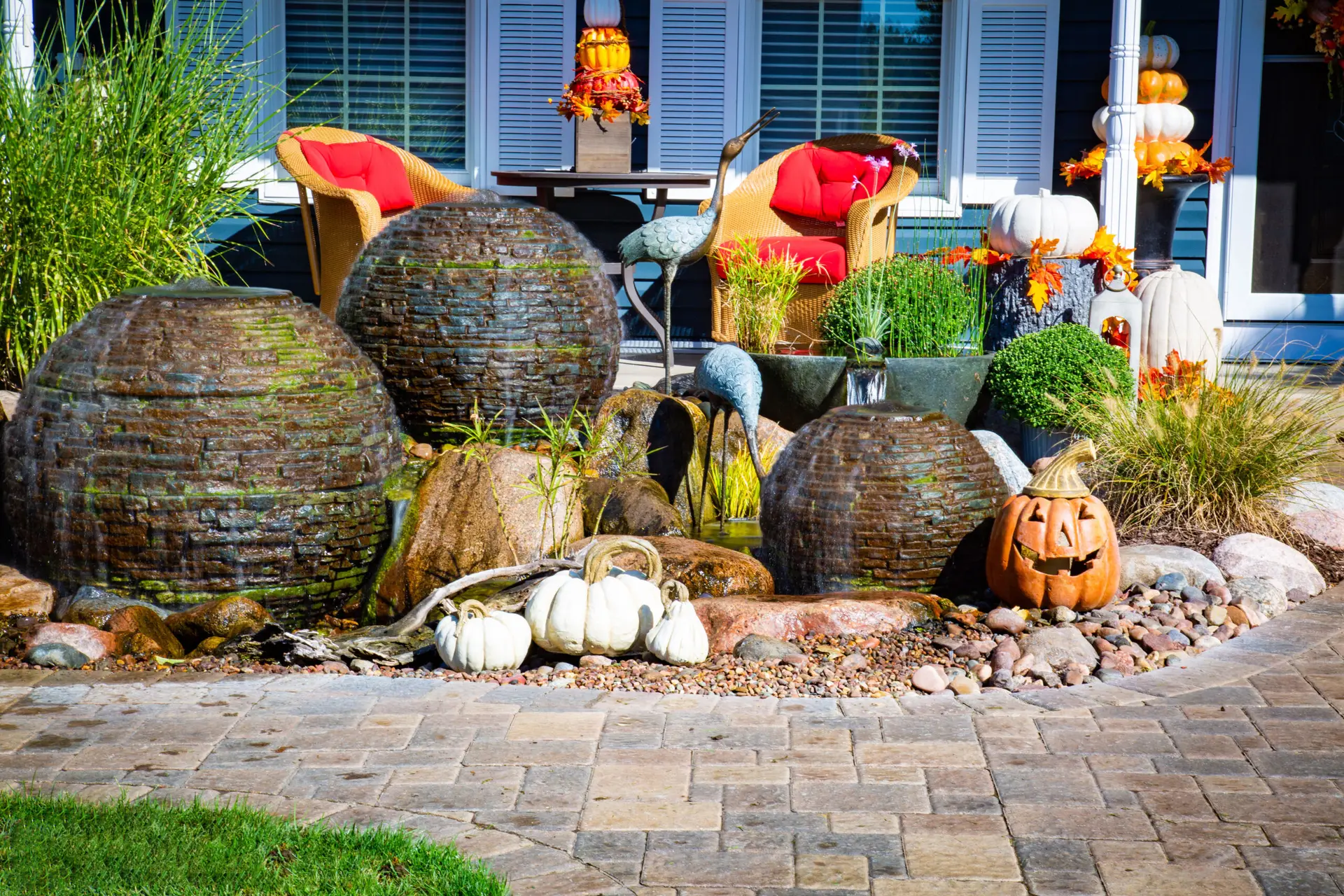
Bird migration is one of the hardest journeys in the natural world. Tiny birds travel thousands of kilometers twice each year, crossing mountains, deserts, and cities to reach their breeding or wintering grounds. Along the way, they need safe places to rest and reliable sources of fresh water.
On Central Vancouver Island, many streams now run underground through storm systems. That makes yards with dependable water features even more valuable to migrating birds. A fountain provides moving, clean water that is easy for them to see and hear, turning your yard into a welcome stop on their long journey.
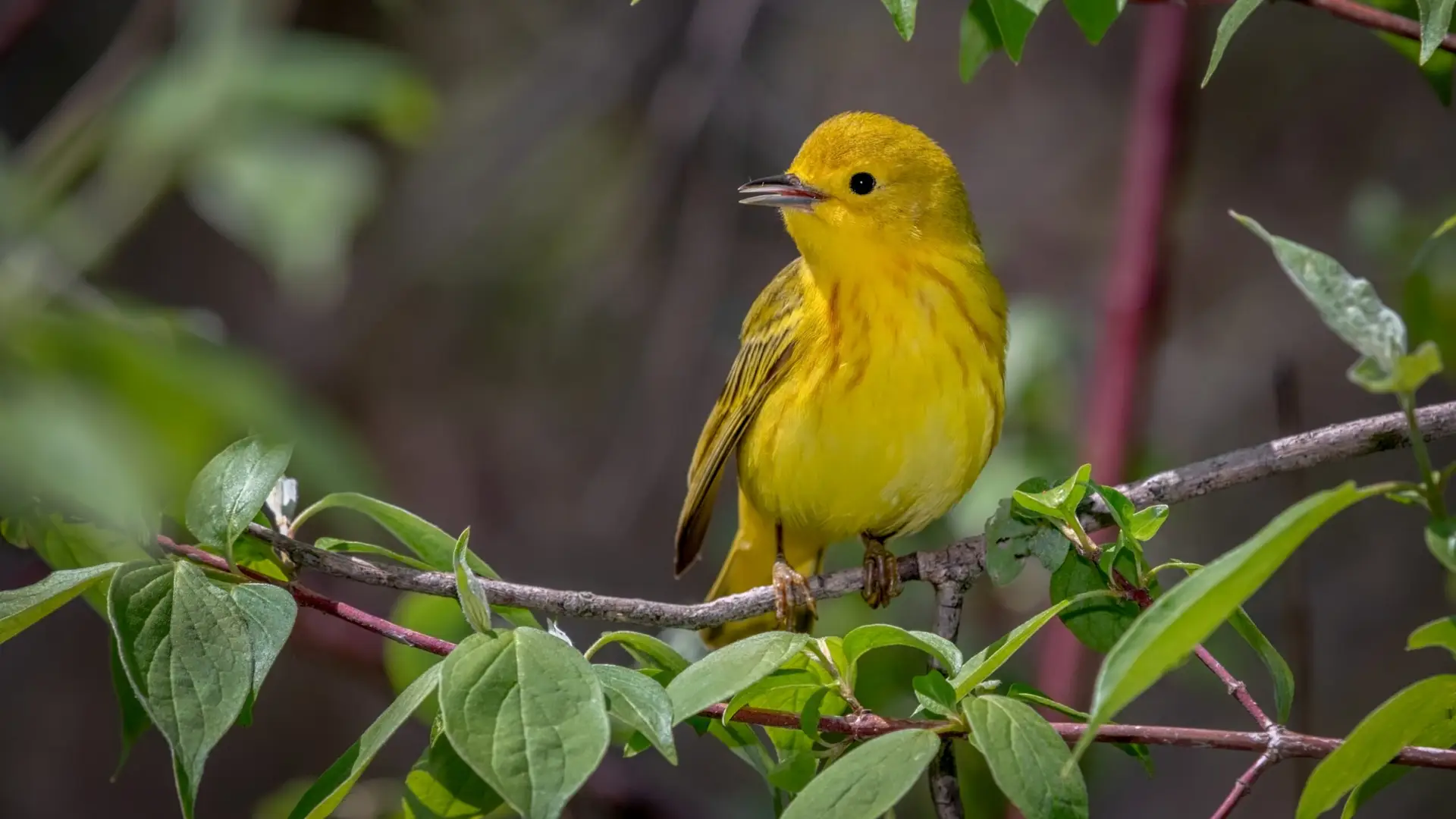
Migration pushes birds to their limits. Many species travel thousands of kilometers, often flying at night to avoid predators and conserve energy. These long flights deplete fat reserves and cause water loss, leaving birds in urgent need of food and fresh water when they land.
Cornell Lab of Ornithology explains that migration is one of the most dangerous stages of a bird’s life, with dehydration and exhaustion among the biggest risks (Cornell Lab).
For birds passing through Central Vancouver Island, finding a clean and dependable water source can mean the difference between continuing their journey or not surviving it.
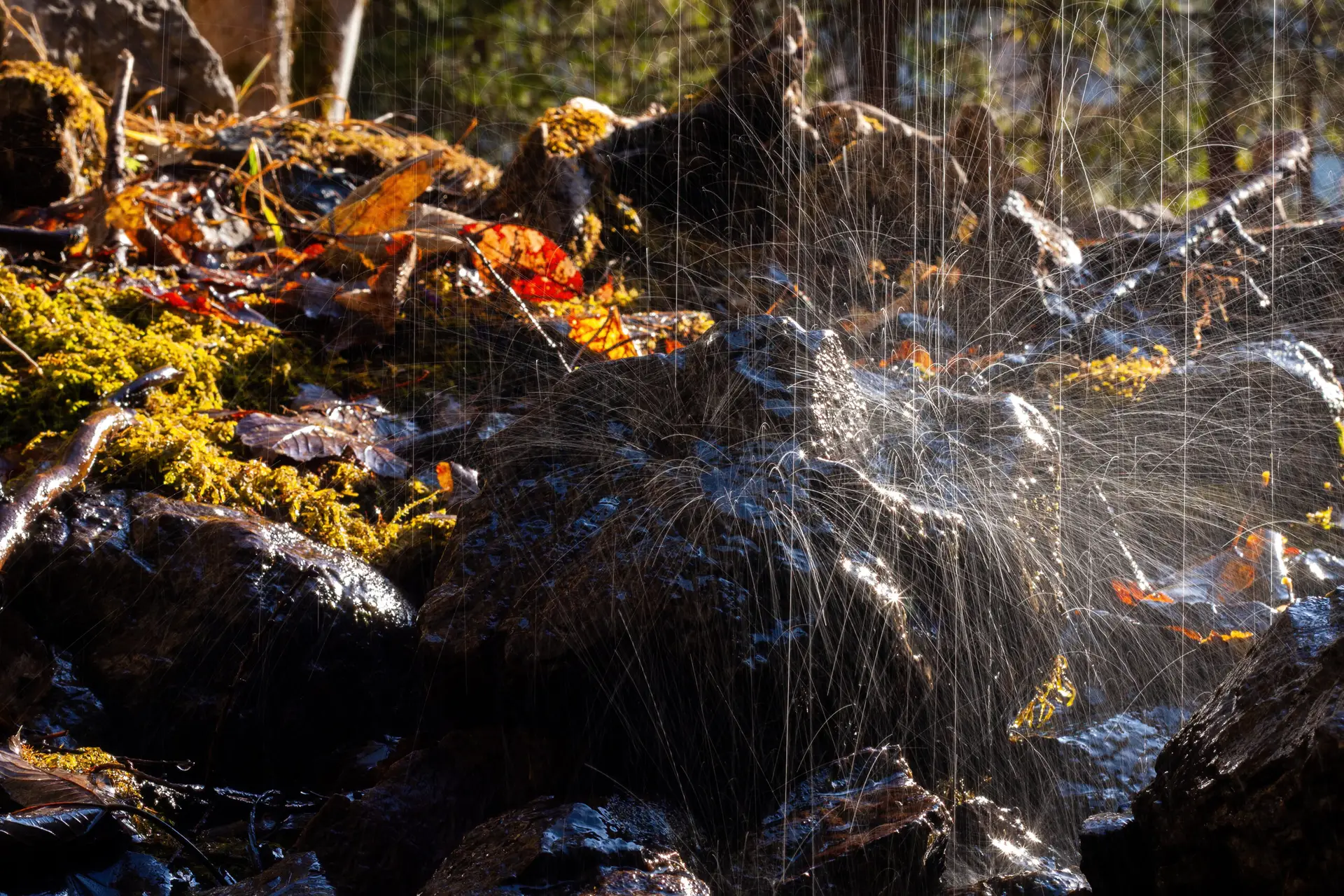
Fresh water is as critical to migrating birds as food. Long flights dry out their bodies, and without a quick chance to drink and rehydrate, their survival odds drop.
Moving water is easier for birds to detect. The flash of light on a ripple or the sound of trickling water carries farther than a still bowl or puddle. Audubon highlights that flowing water is especially effective in drawing migrants because it signals freshness and safety (Audubon).
A fountain provides this natural signal. The steady motion and sound make it stand out in a suburban landscape, guiding weary birds to a dependable stop on their journey.

Central Vancouver Island sits along important migration routes. The birds you see at your fountain will change with the season.
Spring: Rufous Hummingbirds (Selasphorus rufus) arrive as early as March, making one of the longest migrations of any bird their size. Yellow Warblers (Setophaga petechia) and other songbirds follow in late spring, stopping briefly to refuel and rehydrate.
Fall: As birds head south, Golden-crowned Sparrows (Zonotrichia atricapilla) become more common visitors. Mixed flocks of warblers and finches may also appear, using fountains as quick drinking or bathing stops before continuing their trip.
For homeowners from Nanaimo to Duncan, a fountain offers a front-row seat to this seasonal flow of birdlife and provides vital support during one of the most demanding times of the year.
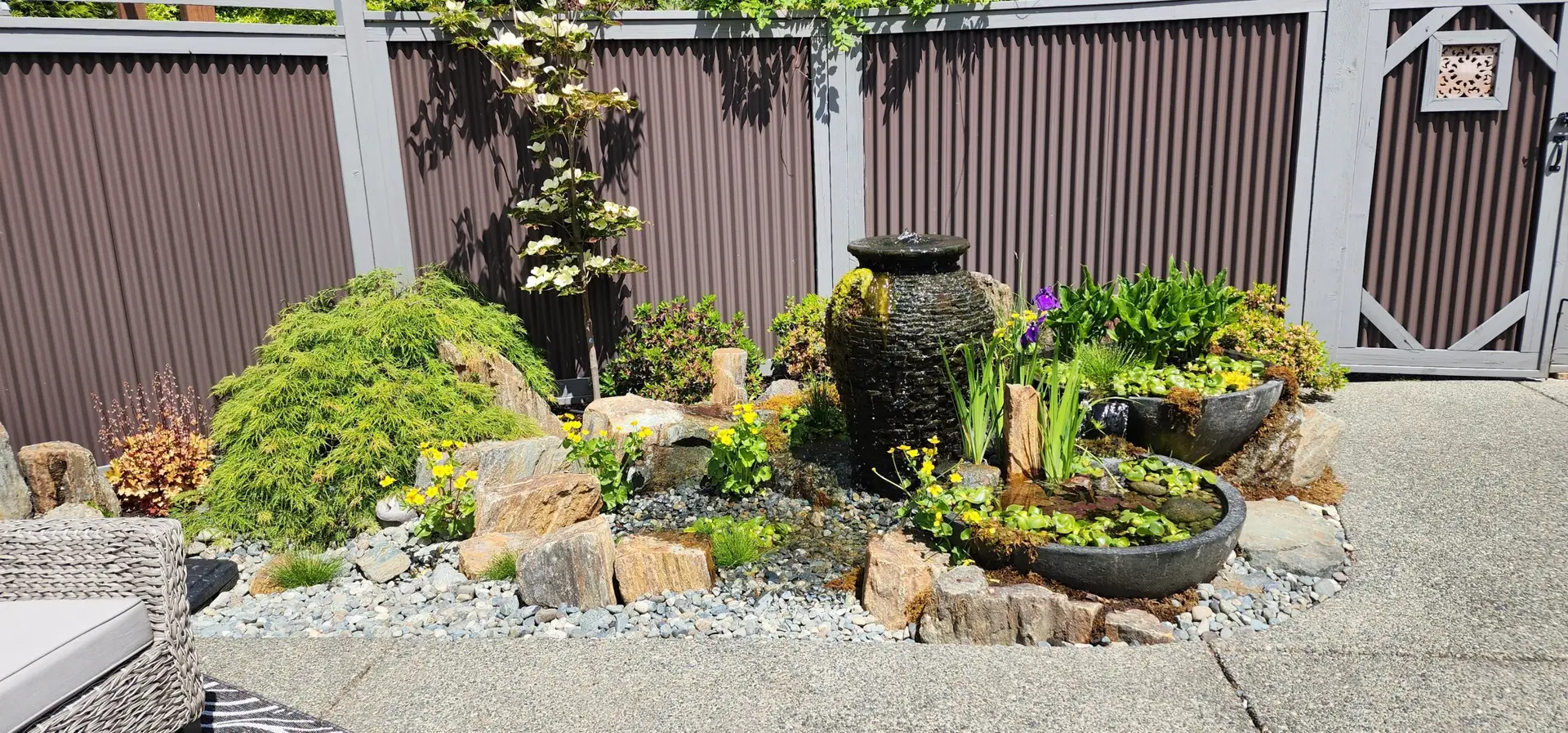
Migrating birds have only a short time to rest before moving on, so the water they find needs to be safe and easy to use. A professionally designed fountain makes this possible.
Shallow edges and natural rockwork give small birds safe footing, while the flow can be adjusted so the water trickles gently instead of splashing too hard. An underground reservoir keeps the surface water cool and reduces the need for constant refilling. The steady movement also helps keep the water clean and oxygenated, which is especially important for tired migrants that cannot risk drinking from stagnant pools.
By providing these features, a fountain becomes a dependable stop for species passing through your yard during both spring and fall migrations.
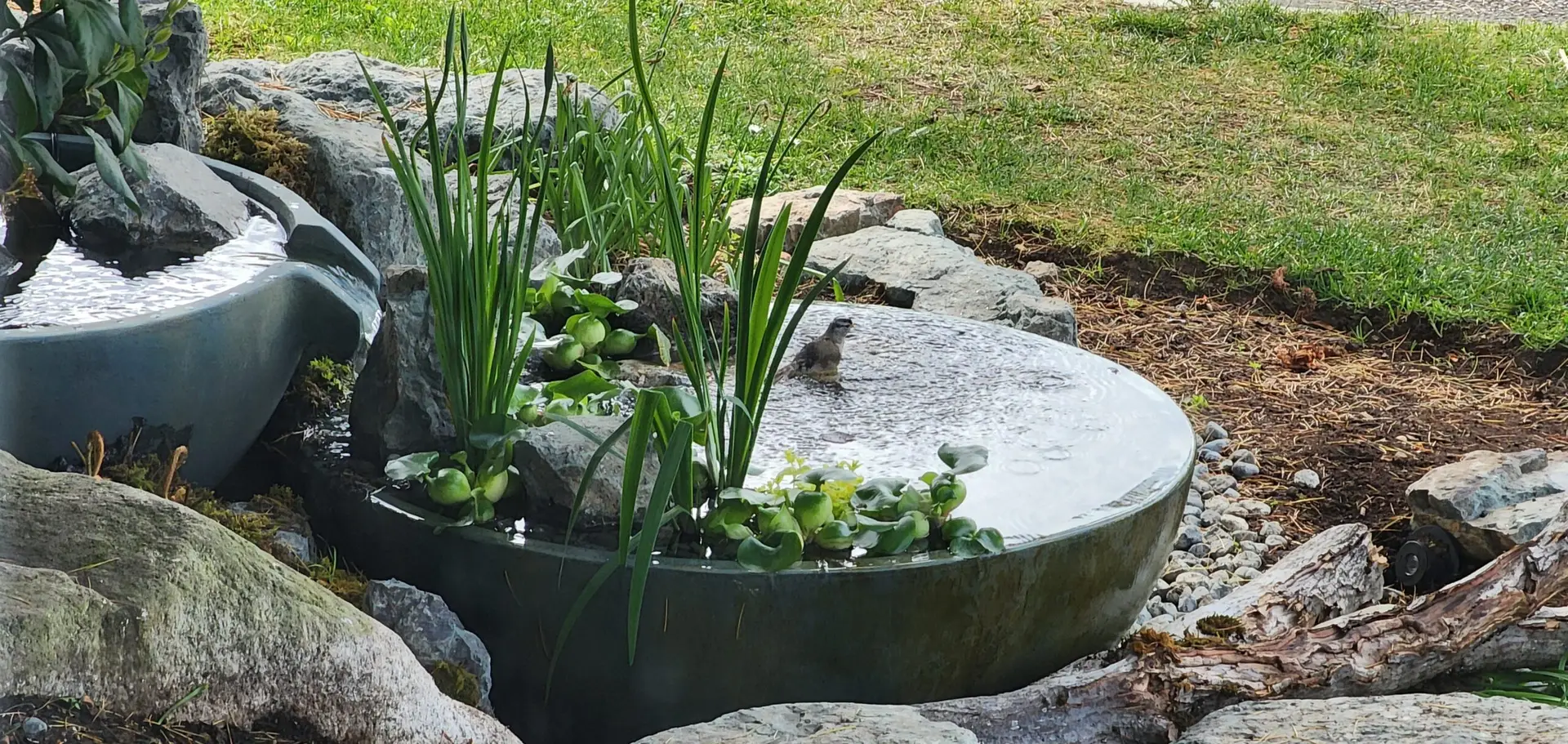
Once your fountain is established, you will notice more activity during migration seasons. Local birds like chickadees (Poecile rufescens) and robins (Turdus migratorius) will continue to use the water, but during spring and fall you may also see less common visitors.
In spring, Rufous Hummingbirds (Selasphorus rufus) often pause at fountains to perch and sip. Warblers, including the Yellow Warbler (Setophaga petechia), may drop in briefly as they pass through. In fall, Golden-crowned Sparrows (Zonotrichia atricapilla) and other migrants can appear in small flocks, adding variety to your yard.
For many homeowners, the excitement lies in not knowing exactly which species will arrive next. A fountain turns an ordinary yard into part of a migration network, bringing surprise and color to everyday life.
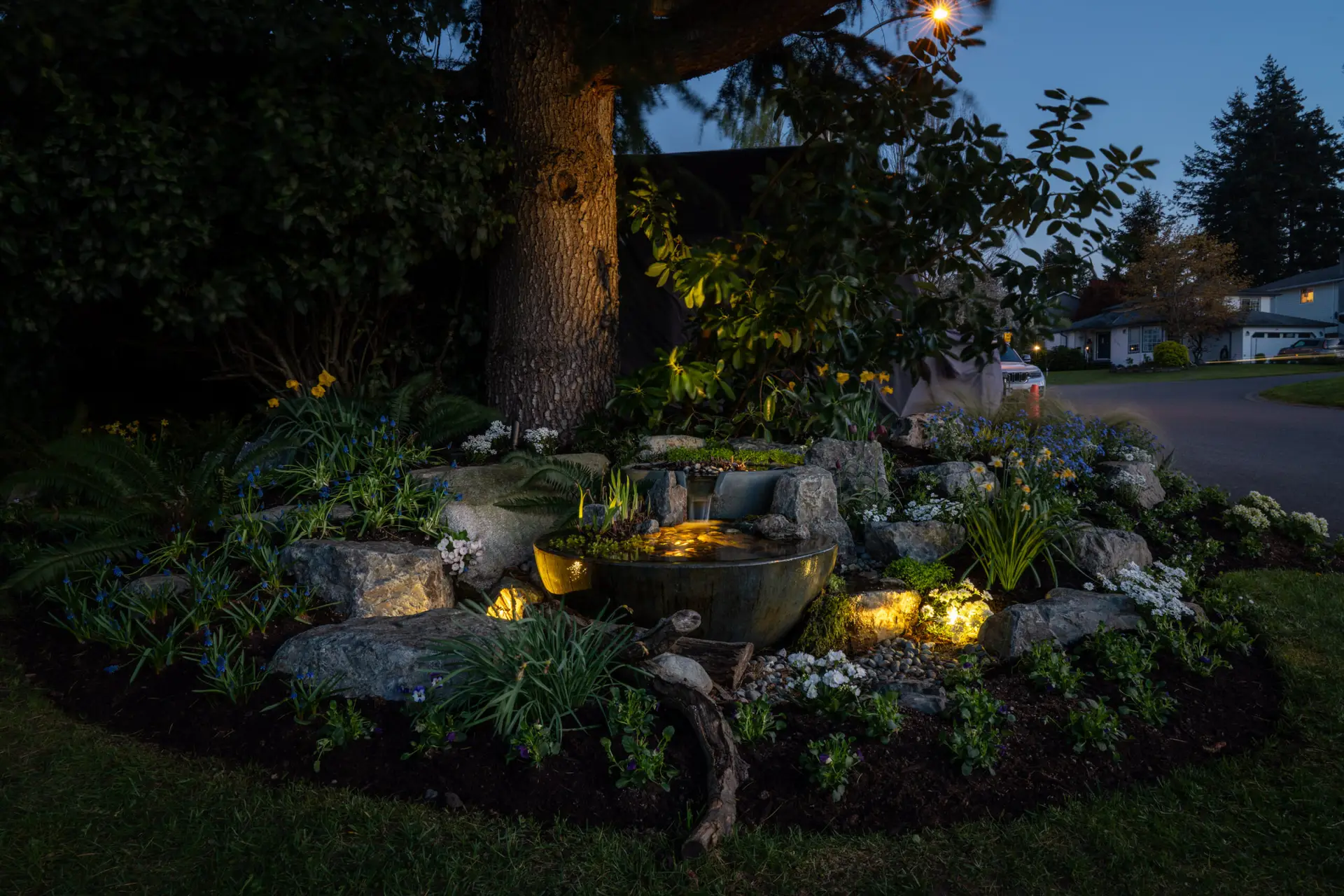
For birds on the move, finding fresh water can mean the difference between continuing their journey or not making it at all. On Central Vancouver Island, where natural streams are often hidden underground, a fountain restores what the landscape is missing. It gives migrants a safe, dependable stop and gives you the joy of seeing new bird species right in your yard.
If you want to experience the excitement of migration season up close, I can help. A professionally designed and installed fountain provides the moving water birds seek and creates a beautiful feature for your home.
Sign up for our free 5-part email series on how moving water helps attract robins, chickadees, hummingbirds, and more right here on Vancouver Island.
You’ll get 5 practical tips, one every few days — then it’s done. No endless emails, no spam.

Back to Plant Library Podophyllum cv. ‘Kaleidoscope’ Description Large, umbrella-like leaves unfurl in spring with marbled patterns of green, bronze,

Back to Plant Library Farfugium japonicum ‘Giganteum’ Old Name: Ligularia tussilaginea Description Large, glossy, rounded leaves up to 18″ across